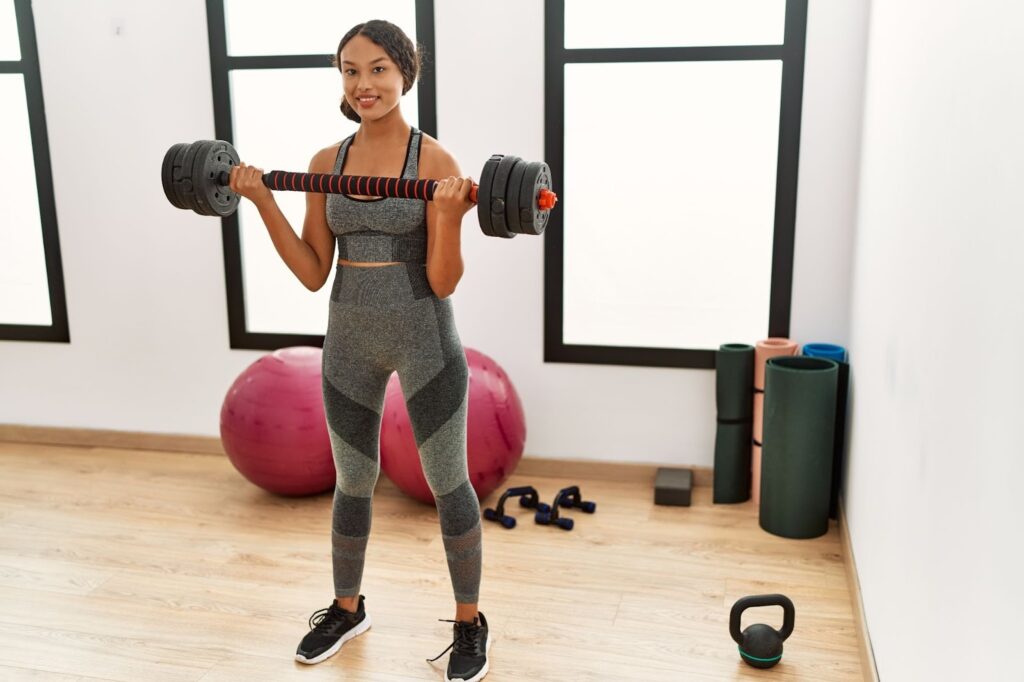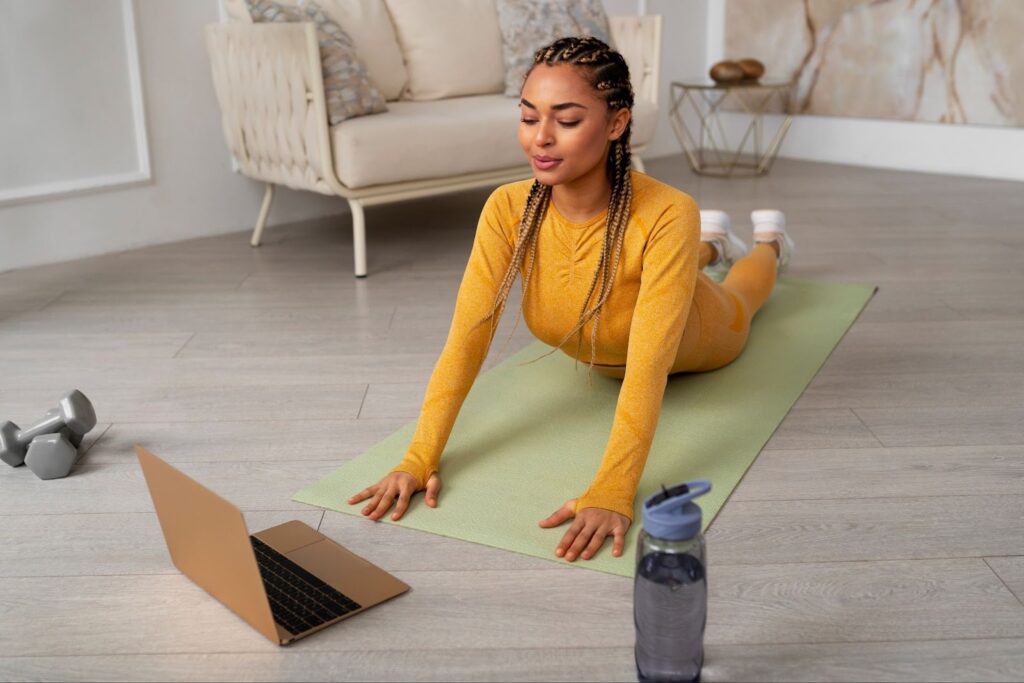
Your Health Magazine
4201 Northview Drive
Suite #102
Bowie, MD 20716
301-805-6805

More Weight Control, Nutrition & Exercise Articles
Creating Your Perfect At-Home Fitness Space: A Complete Guide to Working Out on Your Terms
Introduction
The way Australians approach fitness has fundamentally shifted. What once required expensive gym memberships and commuting across town can now happen steps from your bedroom. The convenience of exercising at home has converted millions of occasional gym-goers into dedicated home workout enthusiasts who wouldn’t dream of going back.
But here’s what many people discover: working out at home consistently requires more than just good intentions and a yoga mat shoved in the corner. The environment you create, the equipment you invest in, and the small details that support your practice all contribute to whether home fitness becomes a lasting habit or another abandoned resolution.
This guide walks you through everything you need to know about building a home fitness setup that actually works for your lifestyle. From designing functional workout spaces to choosing the right gear for different exercise styles, we’ll cover the practical considerations that make the difference between a space you use daily and one that collects dust.

Why Home Fitness Has Become the New Normal
The appeal of home workouts extends far beyond convenience, though that certainly matters. For many people, exercising at home removes barriers that previously derailed their fitness goals. No more rushing to make a class time, feeling self-conscious in crowded spaces, or waiting for equipment during peak hours.
Time savings alone make a compelling case. The average gym-goer spends 30 to 45 minutes just traveling to and from their facility. Multiply that across weekly workouts, and you’re looking at hours reclaimed each month. Hours that could go toward actual exercise, family time, or simply getting more sleep.
Privacy matters too. Not everyone feels comfortable learning new movements or pushing through challenging workouts with an audience. At home, you can try that new routine, fall down during balance exercises, and take breaks without anyone watching. This psychological safety encourages experimentation and helps people stick with fitness long-term.
The financial equation has also shifted. While quality home equipment requires upfront investment, the ongoing costs compare favourably to gym memberships, especially for households where multiple family members exercise. A well-planned setup pays for itself within a year or two for most families.
Designing a Space That Supports Your Goals
The most important factor in successful home fitness isn’t expensive equipment or fancy technology. It’s creating a dedicated space that signals to your brain that it’s time to move. This doesn’t necessarily mean converting an entire room, though that’s ideal if space allows.
Start by assessing what you actually have available. A spare bedroom, garage section, covered outdoor area, or even a corner of your living room can work beautifully with thoughtful planning. The key is designating this space primarily for exercise rather than treating fitness as an afterthought squeezed around other uses.
Consider flooring carefully. Hard surfaces like concrete or tile work fine for some exercises but create problems for others. Rubber flooring or interlocking foam tiles protect both your joints and your floor while reducing noise that might disturb family members or neighbours.
Lighting and ventilation often get overlooked but significantly impact workout quality. Natural light boosts mood and energy, while adequate airflow prevents the stuffiness that makes intense exercise uncomfortable. If your space lacks windows, invest in good artificial lighting and a quality fan or portable air conditioning.
For those serious about creating an optimal training environment, working with specialists who understand fitness space design makes a real difference. A professional home gym fitout takes into account factors that casual planners miss: ceiling height for overhead movements, floor load capacity for heavy equipment, electrical requirements for machines, and traffic flow that makes workouts feel natural rather than cramped.
Professional planning also helps avoid expensive mistakes. Equipment that seemed perfect online might not fit your space or suit your actual training needs. Experts who’ve designed hundreds of home gyms can guide you toward solutions that match both your goals and your budget.

Building Your Equipment Collection Strategically
Resist the urge to buy everything at once. Many home gym owners accumulate equipment they rarely use because they purchased based on aspiration rather than actual workout habits. A smarter approach builds your collection gradually, starting with versatile basics and adding specialized items as your routine evolves.
For strength training, adjustable dumbbells offer exceptional value. A single set replaces an entire rack of fixed weights, saving both money and space. Pair these with a sturdy adjustable bench, and you can perform dozens of effective exercises targeting every muscle group.
Resistance bands deserve a place in every home gym regardless of your primary training style. They’re inexpensive, store easily, and provide variable resistance that complements free weights beautifully. Bands also excel for warm-ups, mobility work, and rehabilitation exercises.
Cardiovascular equipment presents more significant investment decisions. Treadmills, stationary bikes, and rowing machines all have devoted followings, but they also consume substantial space and budget. Consider your genuine preferences here. If you hate running, that treadmill will become an expensive clothes hanger. Many people find that outdoor walking or running combined with indoor strength training provides all the cardio they need without dedicated equipment.
Storage solutions matter more than most people realize. Equipment scattered around a room creates both physical obstacles and mental clutter that discourages use. Wall-mounted racks, dedicated shelving, and smart organizational systems keep everything accessible while maintaining the clean environment that makes workouts inviting.
Exploring Different Training Styles at Home
One advantage of home fitness is the freedom to explore various exercise modalities without committing to specialized studios or classes. Your space can accommodate strength training one day, high-intensity intervals the next, and gentle yoga to round out the week.
Yoga and Pilates have experienced particular growth in home practice. These disciplines require minimal equipment, develop strength and flexibility simultaneously, and provide stress relief that complements more intense training. Many practitioners find they actually prefer practicing at home, where they can move at their own pace without feeling rushed through poses.
The right gear enhances these practices significantly. While you can technically do yoga barefoot on any surface, proper equipment prevents the slipping and instability that disrupts flow and potentially causes injury. Quality mats with appropriate grip, supportive blocks for modified poses, and straps for deeper stretches all contribute to better sessions.
Footwear choices for home practice deserve more attention than they typically receive. For yoga and Pilates specifically, many practitioners benefit from grip socks that provide traction without the bulk of regular footwear. Quality yoga socks australia retailers offer options with strategic grip patterns that enhance stability during challenging poses while allowing the foot flexibility that rigid shoes prevent. These prove especially valuable on wooden floors or when mats tend to slide.
Beyond yoga, consider what other training styles interest you. Boxing workouts require a bag and gloves but deliver incredible cardio and stress relief. Dance fitness needs only space and a screen for following along. Suspension trainers mount to doors or ceilings and enable hundreds of bodyweight exercises. The variety available for home training has never been greater.

Making Your Home Fitness Habit Stick
Even the most beautiful, well-equipped home gym fails if you don’t actually use it. Building consistent exercise habits requires more than physical infrastructure; it demands intentional habit design.
Schedule workouts like appointments. Vague intentions to “exercise sometime today” rarely survive competing demands. Block specific times in your calendar, treat them as non-negotiable, and protect them from encroachment by other obligations.
Remove friction wherever possible. Lay out workout clothes the night before. Keep your space ready to use without setup time. The fewer obstacles between deciding to exercise and actually beginning, the more likely you are to follow through.
Start smaller than you think necessary. Ambitious workout plans often collapse under their own weight. A sustainable 20-minute daily routine beats an unsustainable 90-minute program that you abandon within weeks. You can always add duration and intensity once the basic habit is established.
Track your progress visibly. Whether through a wall calendar, fitness app, or simple notebook, recording workouts creates accountability and reveals patterns. Seeing a streak of completed sessions motivates continued effort, while gaps highlight when adjustments are needed.
Find accountability beyond yourself. Share your goals with family members, join online communities focused on home fitness, or schedule virtual workout sessions with friends. External accountability provides motivation on days when internal drive falls short.
Conclusion
Creating an effective home fitness environment combines thoughtful space design, strategic equipment selection, and intentional habit building. The initial effort pays dividends for years through convenient, consistent access to exercise that fits your life rather than demanding you reshape your life around it.
Whether you’re converting a spare room into a comprehensive training facility or simply carving out a corner for yoga and bodyweight exercises, the principles remain the same. Design your space intentionally, invest in quality where it matters, and build systems that make showing up easy.
Your perfect home fitness setup looks different from anyone else’s because it reflects your unique goals, preferences, and circumstances. Start where you are, use what you have, and improve gradually. The best workout space is ultimately the one you actually use.
Other Articles You May Find of Interest...
- Creating Your Perfect At-Home Fitness Space: A Complete Guide to Working Out on Your Terms
- Transform Your Waistline with Effective Love Handle Workouts
- How Cortisol Affects Belly Fat and Your Overall Health
- The Nutritional Benefits of Button Mushrooms for a Healthier Diet
- Are Grain Puffs the Healthy Breakfast Option You’ve Been Looking For?
- Discover the Surprising Calories in Pears for a Healthy Diet
- The Surprising Health Benefits of Black Beans and Their Protein Content














